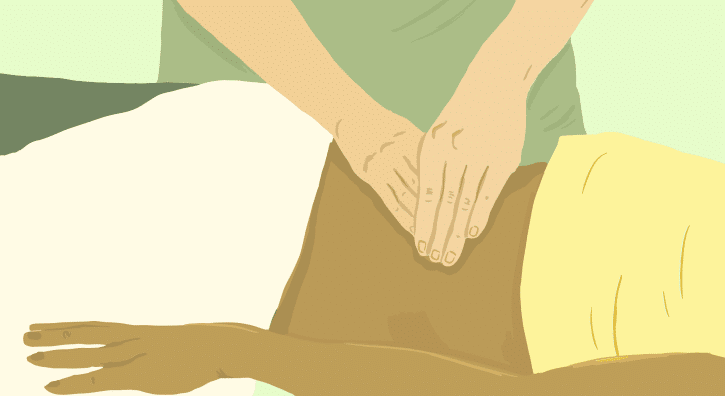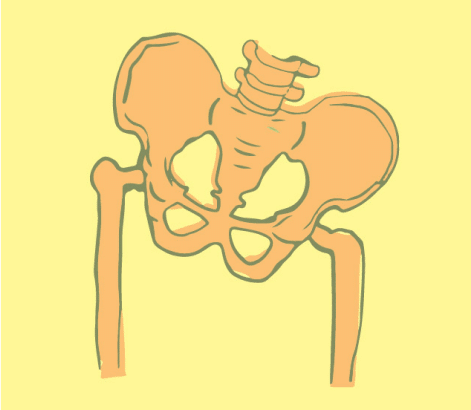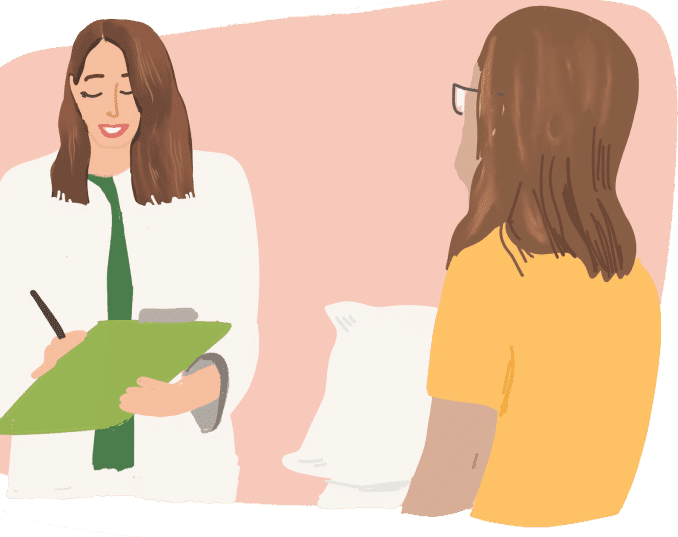

Symptoms
- Burning, aching, stabbing, or stinging sensations may occur around the vaginal entrance, vulva, anus, or perineum
- Pain during intercourse, irritation from snug garments, and trouble sitting comfortably for long periods are commonly reported
- Exercise or physically demanding activities can sometimes exacerbate the symptoms
- Issues with urination—such as urgency, frequent urges, painful peeing, or mild incontinence—are frequently experienced
- Bloating, irregular bowel function, and constipation may show up alongside pelvic pain
- Triggers can include tampon insertion or sexual activity, though some women experience symptoms without any clear cause
- The frequency of pain differs from woman to woman; some have it daily, while others only occasionally

Symptoms
- Burning, aching, stabbing, or stinging sensations may occur around the vaginal entrance, vulva, anus, or perineum
- Pain during intercourse, irritation from snug garments, and trouble sitting comfortably for long periods are commonly reported
- Exercise or physically demanding activities can sometimes exacerbate the symptoms
- Issues with urination—such as urgency, frequent urges, painful peeing, or mild incontinence—are frequently experienced
- Bloating, irregular bowel function, and constipation may show up alongside pelvic pain
- Triggers can include tampon insertion or sexual activity, though some women experience symptoms without any clear cause
- The frequency of pain differs from woman to woman; some have it daily, while others only occasionally

Associated Diagnoses
Diagnoses such as Endometriosis, Vulvodynia, Interstitial Cystitis/Painful Bladder Syndrome, Pudendal Neuralgia, Lichen Sclerosus, Lichen Planus, and Irritable Bowel Syndrome are associated with pelvic pain and pelvic floor dysfunction.


Causes of Pelvic Pain
- Recurring infections in the bladder or vaginal areas, as well as ailments affecting the GI tract, reproductive system, or skin
- Most individuals dealing with chronic pelvic pain are also found to have some degree of pelvic floor dysfunction
- Commonly prescribed medications—such as those for hormonal regulation or acne—can contribute to pelvic distress
- Surgeries targeting the pelvic region, including those done post-childbirth or for prolapse correction, may play a role
- Orthopedic or soft tissue injuries in the pelvic or lower back area
- Conditions like hip misalignment, scoliosis, or sacroiliac joint instability that affect movement mechanics
- Vaginal deliveries that stretch or injure pelvic floor tissues and nerves
- Hormonal decline and pelvic tissue changes associated with menopause
- Genital trauma from practices such as cutting or surgical mutilation
Causes of Pelvic Pain
- Recurring infections in the bladder or vaginal areas, as well as ailments affecting the GI tract, reproductive system, or skin
- Most individuals dealing with chronic pelvic pain are also found to have some degree of pelvic floor dysfunction
- Commonly prescribed medications—such as those for hormonal regulation or acne—can contribute to pelvic distress
- Surgeries targeting the pelvic region, including those done post-childbirth or for prolapse correction, may play a role
- Orthopedic or soft tissue injuries in the pelvic or lower back area
- Conditions like hip misalignment, scoliosis, or sacroiliac joint instability that affect movement mechanics
- Vaginal deliveries that stretch or injure pelvic floor tissues and nerves
- Hormonal decline and pelvic tissue changes associated with menopause
- Genital trauma from practices such as cutting or surgical mutilation

Diagnostic Challenges
For many women, the path to identifying the root cause of pelvic pain is far from straightforward. Studies reveal that the average wait time for a correct diagnosis is about five years—and in cases involving Endometriosis, that delay can stretch to 11 years or more. This is partly because the symptoms of pelvic floor dysfunction often mimic those of more commonly recognized conditions like bladder infections, sexually transmitted infections, yeast overgrowth, or urinary problems. Unfortunately, this leads to repeated misdiagnoses and courses of treatment that don’t actually resolve the issue. Because standard medical tests frequently fail to detect pelvic floor dysfunction, many women—and even their doctors—remain unaware of the true source of their discomfort. It’s not unusual for patients to begin pelvic physical and occupational therapy having never heard of the pelvic floor before.
Diagnostic Challenges
For many women, the path to identifying the root cause of pelvic pain is far from straightforward. Studies reveal that the average wait time for a correct diagnosis is about five years—and in cases involving Endometriosis, that delay can stretch to 11 years or more. This is partly because the symptoms of pelvic floor dysfunction often mimic those of more commonly recognized conditions like bladder infections, sexually transmitted infections, yeast overgrowth, or urinary problems. Unfortunately, this leads to repeated misdiagnoses and courses of treatment that don’t actually resolve the issue. Because standard medical tests frequently fail to detect pelvic floor dysfunction, many women—and even their doctors—remain unaware of the true source of their discomfort. It’s not unusual for patients to begin pelvic physical and occupational therapy having never heard of the pelvic floor before.
Treatment:
How We Can Help You

If you’re a woman in Beverly Hills facing chronic pelvic discomfort, a pelvic floor physical and occupational therapy assessment may be exactly what you need to understand what’s really going on. This kind of evaluation goes far beyond a quick check-up—it involves a deep dive into your medical history, an analysis of any diagnoses you’ve received, and a look at the effectiveness of the treatments you’ve previously tried. By the time many women in Beverly Hills seek our help, they’ve spent months or even years feeling disheartened and overlooked. During your physical exam, the therapist will evaluate your muscles, nerve responses, connective tissues, joint function, and the way you move. From there, we provide a clear breakdown of your contributing issues and develop a care plan tailored specifically to your needs. This usually includes one to two visits per week for about 12 weeks, along with home-based exercises to keep your progress on track. We also work in close coordination with your other healthcare providers to ensure you receive thorough, effective support from every angle. Our goal is to help you reclaim your strength, relief, and confidence.

Treatment:
How We Can Help You
If you’re a woman in Beverly Hills facing chronic pelvic discomfort, a pelvic floor physical and occupational therapy assessment may be exactly what you need to understand what’s really going on. This kind of evaluation goes far beyond a quick check-up—it involves a deep dive into your medical history, an analysis of any diagnoses you’ve received, and a look at the effectiveness of the treatments you’ve previously tried. By the time many women in Beverly Hills seek our help, they’ve spent months or even years feeling disheartened and overlooked. During your physical exam, the therapist will evaluate your muscles, nerve responses, connective tissues, joint function, and the way you move. From there, we provide a clear breakdown of your contributing issues and develop a care plan tailored specifically to your needs. This usually includes one to two visits per week for about 12 weeks, along with home-based exercises to keep your progress on track. We also work in close coordination with your other healthcare providers to ensure you receive thorough, effective support from every angle. Our goal is to help you reclaim your strength, relief, and confidence.
How Can We Help You?
Got questions or suggestions? We’d love to hear from you! Simply complete the form below and include your email address so we can get back to you promptly and directly. Your privacy is important to us—any personal information you provide will be kept completely confidential.

Join The Newsletter. Win a copy of our book, “Pelvic Pain Explained!”
We love getting to know our website visitors. Please tell us a little bit about yourself and get the latest info via PHRC e-newsletter!
*Subscribers automatically eligible to win our book, “Pelvic Pain Explained.”
Pelvic Pain Explained is a comprehensive exploration into the origins of pelvic discomfort, the difficulties both patients and healthcare professionals encounter in identifying the root cause, and the maze of available—but not always effective—treatment approaches. Beyond the clinical, it dives into the emotional strain and personal struggles that come with managing a health issue that often remains unseen and unacknowledged.


